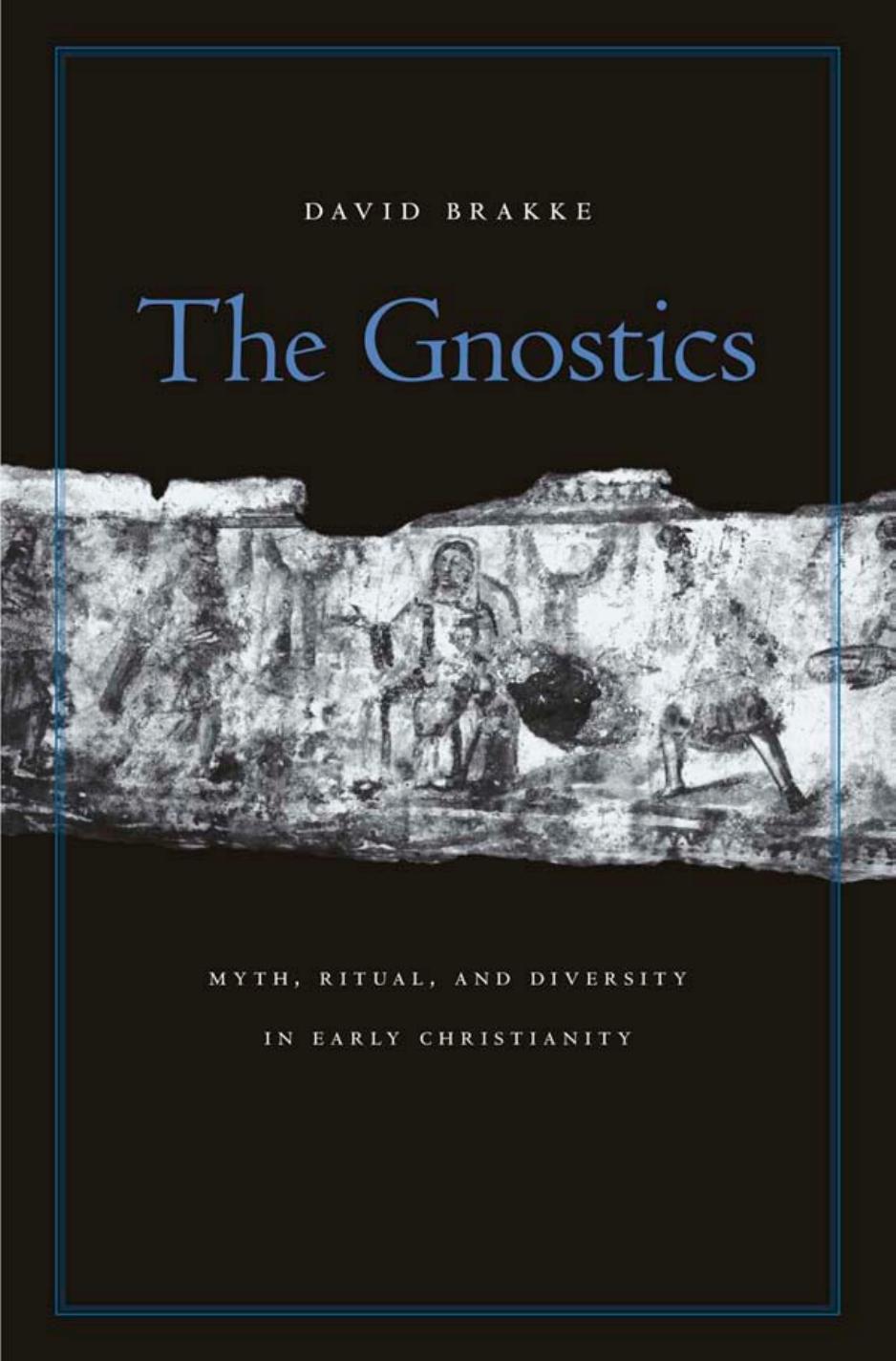The Gnostics: Myth, Ritual, and Diversity in Early Christianity by David Brakke

Author:David Brakke [Brakke, David]
Language: eng
Format: epub, mobi, pdf
Published: 2011-04-16T21:14:00+00:00
Ritual: Baptism and Mystical Ascent
A person did not have to be born to other descendants of Seth to become one of the chosen ones. Rather, one of the most distinctive features of the sect appears to have been its ritual of baptism, which incorporated one into the seed of Seth or immovable race and facilitated ascent to contemplation of the divine.36 According to The Revelation of Adam, the "seed" that will be saved consists of those who "will have received his name"-that is, Seth's name-"upon the water" (83:5-6). Two Gnostic writings (First Thought in Three Forms and The Holy Book of the Great Invisible Spirit) contain fairly extensive, albeit highly stylized and symbolic, depictions of this ritual, and others refer to some of its distinctive elements and presiding divinities or remark on its centrality to salvation.37 In The Secret Book According to John, for example, Forethought describes how she has saved human beings who were in "the prison of the body," unaware of their divine origin and destiny. She calls a person out of "heavy sleep," encourages him or her to "follow your root, which is myself, the compassionate," and warns against the machinations of the demonic rulers. "And," she proclaims at the climax, "I raised and sealed that person, with the light of the water of five seals, so that from thenceforth death might not have power over that person" (Ap. John 31:3-25). The "water of five seals" refers to the distinctively Gnostic form of baptism, which one recognizes by its "five seals."
What happened at this baptism? Oblique, symbolic references in First Thought in Three Forms suggest a series of ritual actions, which we can tell from other sources were followed by a hymnic response (48:1-49:6). In this work, First Thought-that is, the Barbelo-says that first she has "stripped off" from the candidate chaos, darkness, and other elements of this world; the person is subsequently "clothed in shining light" and "dressed in a robe belonging to the robes of light." Likewise, The Holy Book of the Great Invisible Spirit refers to the "armor of loveliness and light" that the baptized person dons (Gos. Eg. IV 79:14-16). As in other forms of Christian baptism, the removal of clothing required for wash ing in water symbolizes the removal of an old state of existence, and special new clothing represents a transformed state. As First Thought in Three Forms presents the ritual, it seems that the person is "washed in the wellspring of the water of life" after putting on the ritual robe. Both of these steps, stripping/clothing and washing, take place under the direction of divine beings who are called "enrobers" and "baptists," respectively. Additional steps follow, which also have presiding divinities, but their actual forms are less easy to discern. The baptized person is given "a throne from the throne of glory" by "the enthroners," and then "the glorifiers" glorify the candidate "with the glory of the kinship." Finally, "those who catch up" take the person "into the luminous places of that person's kinship"-a reference perhaps to some form of mystical ascent and contemplation.
Download
The Gnostics: Myth, Ritual, and Diversity in Early Christianity by David Brakke.mobi
The Gnostics: Myth, Ritual, and Diversity in Early Christianity by David Brakke.pdf
This site does not store any files on its server. We only index and link to content provided by other sites. Please contact the content providers to delete copyright contents if any and email us, we'll remove relevant links or contents immediately.
| Buddhism | Christianity |
| Ethnic & Tribal | General |
| Hinduism | Islam |
| Judaism | New Age, Mythology & Occult |
| Religion, Politics & State |
Cecilia; Or, Memoirs of an Heiress — Volume 1 by Fanny Burney(31341)
Cecilia; Or, Memoirs of an Heiress — Volume 3 by Fanny Burney(30938)
Cecilia; Or, Memoirs of an Heiress — Volume 2 by Fanny Burney(30894)
The Secret History by Donna Tartt(16643)
Sapiens: A Brief History of Humankind by Yuval Noah Harari(13067)
Leonardo da Vinci by Walter Isaacson(11912)
The Radium Girls by Kate Moore(10914)
Sapiens by Yuval Noah Harari(4546)
The Wind in My Hair by Masih Alinejad(4427)
How Democracies Die by Steven Levitsky & Daniel Ziblatt(4407)
Homo Deus: A Brief History of Tomorrow by Yuval Noah Harari(4287)
Endurance: Shackleton's Incredible Voyage by Alfred Lansing(3851)
The Silk Roads by Peter Frankopan(3769)
Man's Search for Meaning by Viktor Frankl(3644)
Millionaire: The Philanderer, Gambler, and Duelist Who Invented Modern Finance by Janet Gleeson(3573)
The Rape of Nanking by Iris Chang(3522)
Hitler in Los Angeles by Steven J. Ross(3442)
The Motorcycle Diaries by Ernesto Che Guevara(3340)
Joan of Arc by Mary Gordon(3262)
